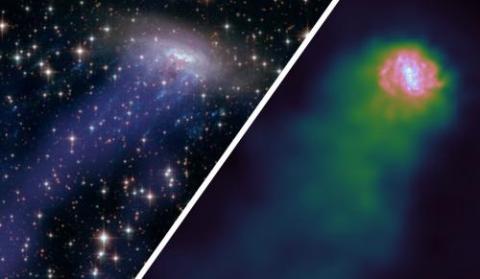Under pressure, black holes feast

A new, Yale-led study shows that some supermassive black holes actually thrive under pressure.
It has been known for some time that when distant galaxies — and the supermassive black holes within their cores — aggregate into clusters, these clusters create a volatile, highly pressurized environment. Individual galaxies falling into clusters are often deformed during the process and begin to resemble cosmic jellyfish.
Curiously, the intense pressure squelches the creation of new stars in these galaxies and eventually shuts off normal black hole feeding on nearby interstellar gas. But not before allowing the black holes one final feast of gas clouds and the occasional star.
The researchers also suggested this rapid feeding might be responsible for the eventual lack of new stars in those environments. The research team said “outflows” of gas, driven by the black holes, might be shutting off star formation.
“We know that the feeding habits of central supermassive black holes and the formation of stars in the host galaxy are intricately related. Understanding precisely how they operate in different larger-scale environments has been a challenge. Our study has revealed this complex interplay,” said astrophysicist Priyamvada Natarajan, whose team initiated the research. Natarajan is a professor of astronomy and physics in Yale’s Faculty of Arts and Sciences.
To read more of Jim Shelton’s article on YaleNews, follow the link below….
